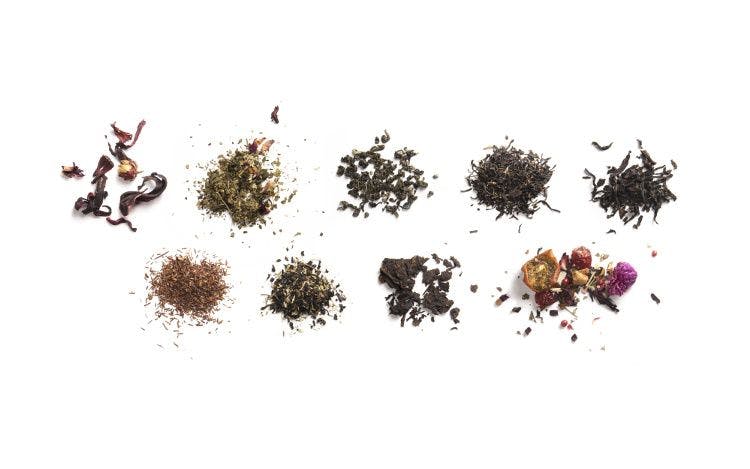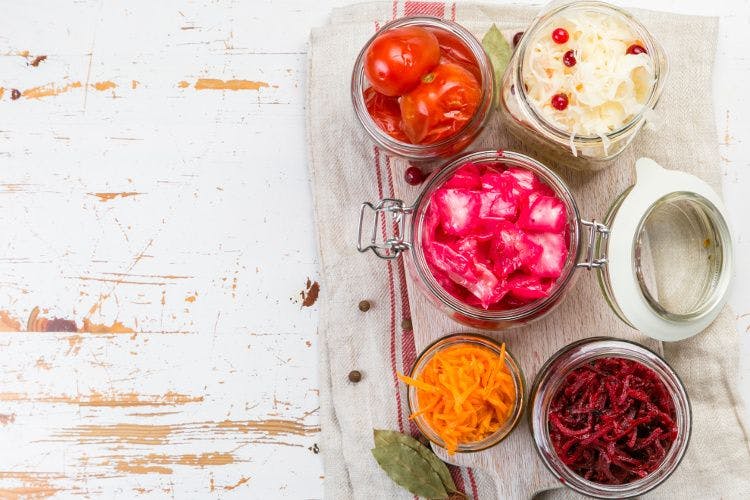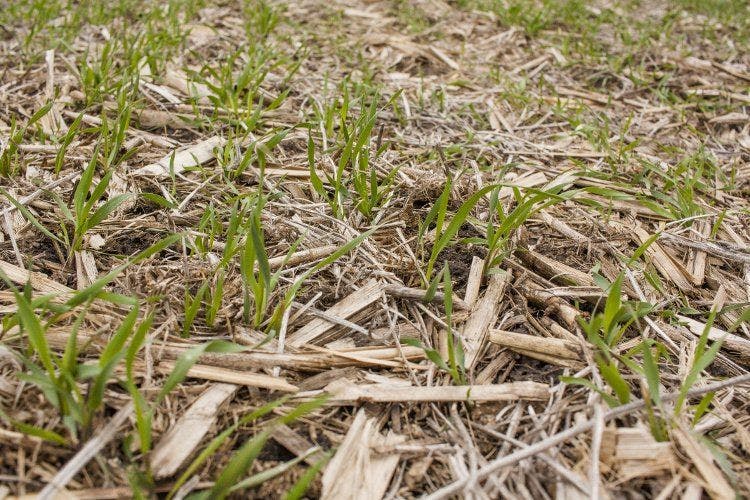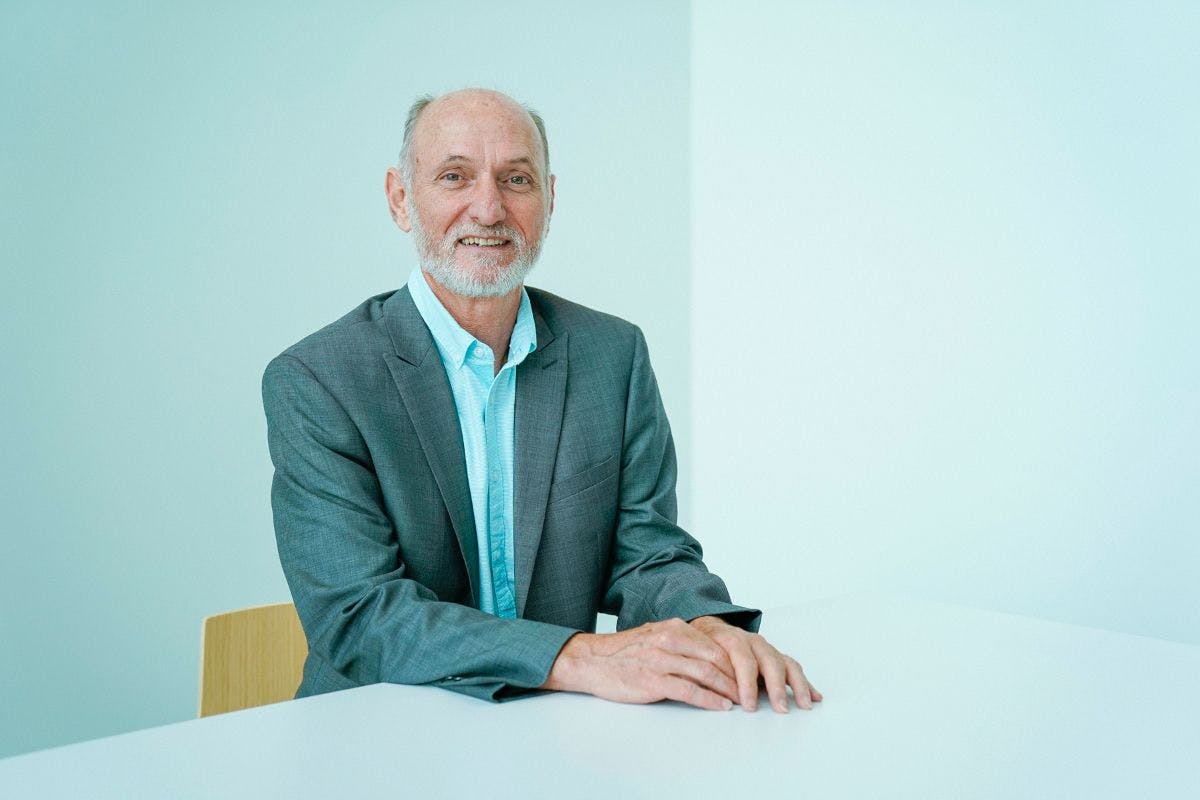Sustainability in the Field: Regenerative agriculture and biodiversity in the natural products industry
How much do we know about the impacts of harvesting? How do we leave the earth and soil better than we found it? How do suppliers maintain a sustainable supply chain when natural disasters and other environmental factors are greatly impacting yields?
Photo © Bmargaret - Stock.adobe.com
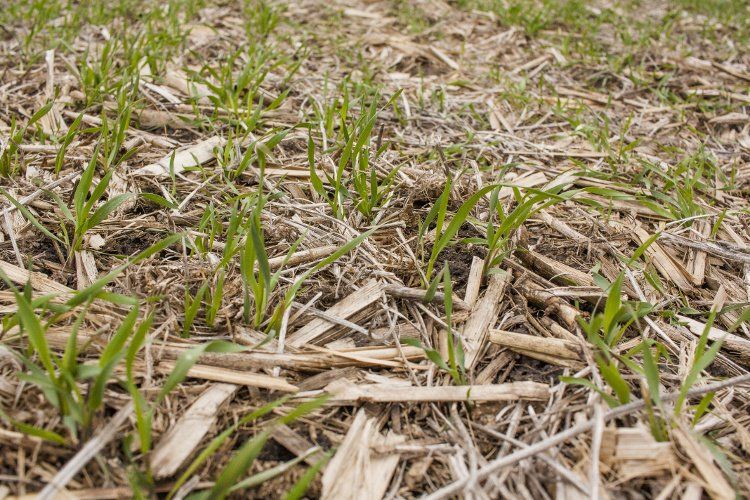
When companies talk about environmental sustainability, they tend to talk about it in terms of reduction, avoidance, and maintenance. New conversations, however, are using terms like rehabilitation and regeneration because, let’s face it, sustaining what we have isn’t enough; ideally, we would leave the earth and its resources healthier than we found it. At the center of these conversations are such questions as: How much do we know about the impacts of harvesting? How do we leave the earth and soil better than we found it? How do suppliers maintain a sustainable supply chain when natural disasters and other environmental factors are greatly impacting yields?
Take the world of herbal ingredients. “Herbal product companies are already experiencing disruptions in their supply chains from shortages from unprecedented rains, droughts, fires, hurricanes, and other weather events caused by climate change,” says Ann Armbrecht, PhD, director of the Sustainable Herbs Program. “These disruptions will only increase in the future.” Armbrecht, an anthropologist, founded the Sustainable Herbs Program in 2015 to spread education about the medicinal plant supply chain and garner support for sustainability, ethical sourcing, and transparency in the industry. In 2018, the educational group the American Botanical Council (Austin, TX) added its clout to the program, coming on board as a partner.
The American Herbal Products Association Foundation for Education and Research on Botanicals (AHPA-ERB)-which promotes education and research on medicinal, therapeutic, and health-promoting herbs-funds a lot of harvest-impact studies. “We give money to academics and not-for-profits to collect scientific data in the field to understand how these populations of wild plants are being impacted by harvest,” says Holly E. Johnson, PhD, chief science officer at the American Herbal Products Association (AHPA; Silver Spring, MD).
One of AHPA-ERB’s harvest-impact studies is on oshá (Ligusticum porteri), a sacred Native American plant used in herbal supplements. “We have had an ongoing six-year study with Kelly Kindscher, PhD, a botanist at the University of Kansas, and his team of students who have gone out and done [research] in northern New Mexico and Colorado where the herb grows,” Johnson says. “Right now, there’s a forest ban, so we can’t harvest much at all on forest land. But we’re trying to figure out what’s going on. Is there a lot of it out there? If there was a commercial harvest, how much could we take? We’re harvesting different amounts and seeing how the herb recovers over a number of years.”
Wild-harvested herbs are not only affected by climate change, but resource allocation. “There are fewer wild places these days,” Johnson says. “And, of course, the demand for botanicals has gone up. As that happens, you have to keep an eye on it to make sure these wild plants are sustained.”
When it comes to cultivated plants, “At the current rates of soil degradation, the world’s topsoil could be lost within 60 years, a senior UN official has said,” says Armbrecht.
According to the World Wildlife Fund (WWF), half of the topsoil in the world has been damaged in the last 150 years. Decarbonization, erosion, desertification, and chemical pollution all damage soil. And in addition to the loss of arable topsoil, soil scientists say our food will lack vital nutrients and trace minerals due to the current rates of soil damage.
The herbal industry has an important role to play in supporting biological diversity preservation and regenerative ecosystems. “It’s important because in sourcing raw materials in a responsible way, the industry can be part of regenerating the ecological, economical, and cultural systems of communities, bringing wellness not just to the consumer of the finished product but to all of the communities-human and ecological-involved,” Armbrecht says.
Regenerative Agriculture
According to the nonprofit group Regeneration International, regenerative agriculture is defined “as farming and grazing practices that, among other benefits, reverse climate change by rebuilding soil organic matter and restoring degraded soil biodiversity, resulting in both carbon drawdown and improving the water cycle.”
“It is a holistic land-management practice that leverages the power of photosynthesis in plants to close the carbon cycle, and build soil health, crop resilience, and nutrient density,” the group explains on its website.
In a 2017 article they wrote for the publication GreenBiz1, Martin Stuchtey, founder and managing partner of SYSTEMIQ, and Morten Rossé, expert associate principal at McKinsey Center for Business & Environment, urged: “It is time to move away from what has become a linear food system: a take, make, dispose system in which, too often, synthetic inputs go into the land; the land gets overused, and a huge proportion of the food produced is wasted and ends up in landfill. In addition, many nutrients never make it back to the field, stacking up in contaminated sludge. The goal should be to move toward a regenerative model in which land is restored as it is used and in which nutrient and material loops provide much-needed inputs, resulting in a healthier food supply.”
Often these practices involve assessments and certifications to ensure they are being adhered to, Armbrecht says. “And often, the burden-both in time and cost-falls on producer groups and/or growers. Companies can help shift this burden in different ways, from supporting farmers in their network to participating in the increasing number of regenerative farmer-training programs to sharing the costs of participating in certifications like FairWild.” The FairWild Foundation is a third-party certification program designating companies that are sourcing and producing products using socially and ecologically responsible methods.
Ryan Sirolli, global row crop sustainability director for ingredients supplier Cargill (Minneapolis), says that as farmers adapt practices that improve soil health, they help “build drought resilience, increase yield stability, reduce nutrient loss, and increase carbon sequestration”-benefits that could come back to the company itself.
“There is strong evidence to support that these efforts translate into more stable yields with lower input costs,” he says.
Cargill fosters a partnership with the Soil Health Institute, bringing farmers and ranchers together with industry to invest in soil health. One way in which soil health is improved is through cover crops-for instance, typically soybeans are planted one year, followed by corn the next. Planting a cover crop helps bring about many of the benefits mentioned above. “In some locations, yellow peas can serve as the cover crop, allowing farmers to earn additional income, enabling them to grow and harvest three crops over the span of two years. They earn income from an extra crop; plus, yellow peas bring a host of soil health benefits. And, since peas put nitrogen back into the soil, less nitrogen fertilizer is needed to grow corn the next year, saving farmers input costs while improving water quality,” Sirolli explains.
In the Wild
Nuherbs (San Leandro, CA) is a supplier and importer of Chinese herbal ingredients. Wilson Lau, vice president of sales and marketing, explains that the company started going directly to its growers and wildcrafters many years ago to ensure the quality and sustainability of its herbs. “We are just beginning to explore biodynamic farming and regenerative ecosystems,” he says. “However, our sourcing practices are deeply rooted in sustainability and all the different facets of supply-chain security.”
With the help of foundations such as FairWild, Lau says each herb is assessed to confirm it can be harvested sustainably. “The soil, temperature, humidity, terrain, and microclimate all contribute to the potency of the plant,” he explains. “We ascertain the right area where it should be grown for the activity we seek. We ensure it is collected at the correct time, using the best techniques for the plant’s well-being and the herb’s activity.”
AHPA’s Johnson also speaks to the belief that sustainable wild harvesting relates to the power of the plant itself. “[APHA has found that] there’s a real feeling that the conditions in the natural forest where these herbs evolved actually contribute to the healing powers of the plant once harvested,” Johnson says. “So, they’re not seen as just a commodity by people who take them; there’s a sector of people who are into herbs and botanicals who would like to see them harvested from the wild as opposed to bringing them in for cultivation.”
Herbal supplier Draco Natural Products (San Jose, CA) works with its partners in China to promote wildcrafting principles. Through its sustainable wildcrafting program, 10%-20% of the material is left on the field to prevent over-harvesting or depletion of the plant-resource biome.
“Since wild plants are often more efficacious, over two-thirds of our products are made from ethically wildcrafted plants,” says Brien Quirk, Draco’s director of R&D. This means that plant materials are only harvested in areas that are not affected by pollution, and only partial harvests of the healthiest plants are taken, among other practices.
“Another interesting component of this program is utilizing the benefits of partial cultivation in wildcrafting by reseeding in areas to help replenish and ensure the plant-stock survival,” Quirk explains. “It’s similar to how birds and wildlife spread seeds by eating them but not fully digesting all of them, which allows the plants to be reseeded and established in new areas.”
The benefits of these practices are many, Quirk says. “Diversified flora and fauna in more wild and sustainable ecosystems allow plants to thrive better by resisting insect attack or fungal diseases that are otherwise more susceptible to spread of diseases or infestations in crop monoculture. With birds, insects, and other wildlife in a more natural setting, no one insect can multiply unchecked as in typical agricultural settings because the more natural prey-and-predator interactions will keep a dominant population in check.”
Sustainable Farming Methods
Implementing sustainable practices and establishing new techniques, and even supply chains, can be overwhelming. Faced with these daunting challenges, where should companies start?
“As [medicinal plant expert] Josef Brinckmann advises, the best thing to do is just start somewhere,” says the Sustainable Herbs Program’s Armbrecht. “Pick one plant in your supply chain that is important to your business and follow it to the source. Identify the threats to biological diversity and degraded ecosystems and begin to take action. There are plenty of resources available for what to do when you identify the threats.”
Like many companies, pea ingredient supplier Puris (Minneapolis) diversifies its efforts and its portfolio to support regenerative practices and diverse crop rotations, which include yellow field peas.
“We don’t believe the one-seed-fits-all model supports a regenerative ecosystem,” says Nicole Atchison, chief technology officer. “We believe growers deserve more high-quality choices for their farms. Our portfolio of beans, pulses, and other non-GMO plants is adapted to the unique conditions of our partner farms.” The company’s website states: “Every variety is naturally bred for superior yield, disease resistance, and vigor, and regenerates the soil, leaving the soil healthier than it started.”
Atchison says Puris has seen many successes as a result of this, including releasing pulse varieties that excel in new geographies, providing additional options for diversity and double cropping on these farms, and leveraging the shorter growing cycles of peas to ensure winter cover crops are established to add beneficial nitrogen naturally to the soil.
Education is also a key act that companies can play a role in. Groups such as the Midwest Row Crop Collaborative (MRCC) support the production of row crops in the Midwest. Cargill, a founding member, says MRCC’s goal is to demonstrate how changes in farming practices can viably benefit the environment, using science-based approaches to identify and develop solutions to meet a set of goals that include soil health, water conservation, and nutrient loading reduction.
Cargill’s cocoa and chocolate products also adhere to sustainable practices. In addition to its support of the World Cocoa Foundation’s Cocoa & Forests Initiative (CFI), “We help farmers adopt sustainable agricultural practices, from learning to farm existing land more efficiently to supporting reforestation and biodiversity-enhancing efforts through agroforestry and conservation,” says Ilse Tarantino, Cargill’s cocoa and chocolate North America sustainability lead.
Ingredients supplier Sabinsa Corp. (East Windsor, NJ) also finds value in training farmers in best agricultural practices, as well as practicing corporate social responsibility. In 2004, the company hired botanists and soil experts and began contracting with farmers across India to ensure a sustainable, transparent, and traceable supply of raw materials. Sabinsa funded new irrigation systems and advocated for the use of sustainable farming methods. Farmers are also guaranteed a minimum purchase price, even when harvests are poor, and they are paid above that contracted price if market rates increase.
“We started the program to ensure we would have a continued supply of raw material, but the program became much more-a social mission where we fund the small rural schools and improve local infrastructure,” says Shaheen Majeed, president worldwide, Sabinsa.
Today, Sabinsa’s farming network expands over 40,000 acres and involves more than 6,000 farmers all over India. “I have stood with these farmers on the land and heard them say that their child will be the first in the family to go to a university thanks to our efforts,” says Majeed. “Planning ahead, we’ve expanded the program into parts of Africa and Southeast Asia as we continue to look toward the future and anticipate the effects of weather patterns and climate change.”
Full-iD is an internal certification system at ingredients supplier Vidya Herbs (Fullerton, CA) that measures different categories, including farming practices that preserve natural resources and respect the farm ecosystems. “Through regular on-field visits and trust-based relationships with our farmers, we avoid any destruction of the local forest and/or biodiversity,” says Emilie Danckaert, global marketing manager. “We encourage our farmers to maintain the variety of animals and plant species that keep a natural ecological balance.” For example, coffee growing near adapted shade trees-silver oak, black pepper, or guava trees-keeps in the humidity and creates a bird-and-bat-friendly environment.
Polyculture, the practice of raising multiple crops in the same field, is also encouraged to promote a richer ecosystem. “Our farmers, for example, alternate between turmeric and potato crops to renew the soil by regulating nitrogen and avoiding soil depletion,” Danckaert says.
Upcycling
Vidya Herbs also practices botanical upcycling: When a plant is harvested, every part of the harvested plant is transformed into high-added-value ingredients, following a zero-waste approach.
Upcycling also happens in the food industry. Every year, roughly one-third of the food produced in the world for human consumption-approximately 1.3 billion tons-is wasted or lost, according to the Food and Agriculture Organization of the United Nations. Finding ways to reuse byproducts that are rich in nutrients creates positive impacts on the environment and economics.
“Most byproducts from food production are now composted, used for energy production, or as animal feed,” says Thierry Lenice, global environmental manager at Diana Food (France), a part of Symrise. “We are now trying to identify the valuable components, consider how we can extract and stabilize them during the manufacturing process, and transform them into products for humans, pets, or aquaculture. For example, in fruit and vegetable production, one-third of the harvest is lost because it does not meet aesthetic retail criteria, which set strict specifications regarding shape, weight, and size. We can use these raw materials, as well as residual material such as skins, peels, seeds, or flesh, for new products.”
Denis Guyonnet, the innovation scientific director of Diana Nova, Symrise’s incubator for innovation in health and nutrition, says there is great value in the residual products and byproducts from food production.
He says: “The production of our banana purees, flakes, and powder-which are used in baby food and other products-generates around 22,000 tons of banana peels a year, which still contain a lot of dietary fiber and health-promoting substances. If we extract and recycle these and many other natural ingredients, it will have a positive impact on the environment. In this way, we contribute to the conservation of natural resources while also creating new markets and economic advantages for our company.”
A Promising Future
Many ingredient companies have established sustainability practices that help protect the land, farms, crops, wildlife, the oceanic ecosystem, plants, farmers, and communities they work with. Each year, companies are realizing the value of not only replenishing and protecting the land, but they understand the value in bringing workers, communities, and industry together to bring about good for the land and the people.
As the need for resource management, sustainable harvesting, regenerative agriculture, and circular systems becomes more imminent, technology, innovation, data, partnerships, and accountability will play large roles in these efforts.
Sidebar: Sea Change
Aker BioMarine is situated in Oslo, Norway, where the Antarctic ecosystem uniquely depends on Antarctic krill (Euphausia superba). To protect the oceanic ecosystem during krill harvesting, heavy regulations are in place.
“The very strict and precautionary regulation of the Antarctic krill fishery is the most important measure to ensure a sustainable krill harvest without negative effects on other species in the oceanic ecosystem,” says Runa Haug Khoury, director of sustainability, Aker BioMarine AS. “The harvest is limited to one area near the Antarctic peninsula, and the harvesting companies are only allowed to harvest less than 1% of the total krill biomass in that area per year.”
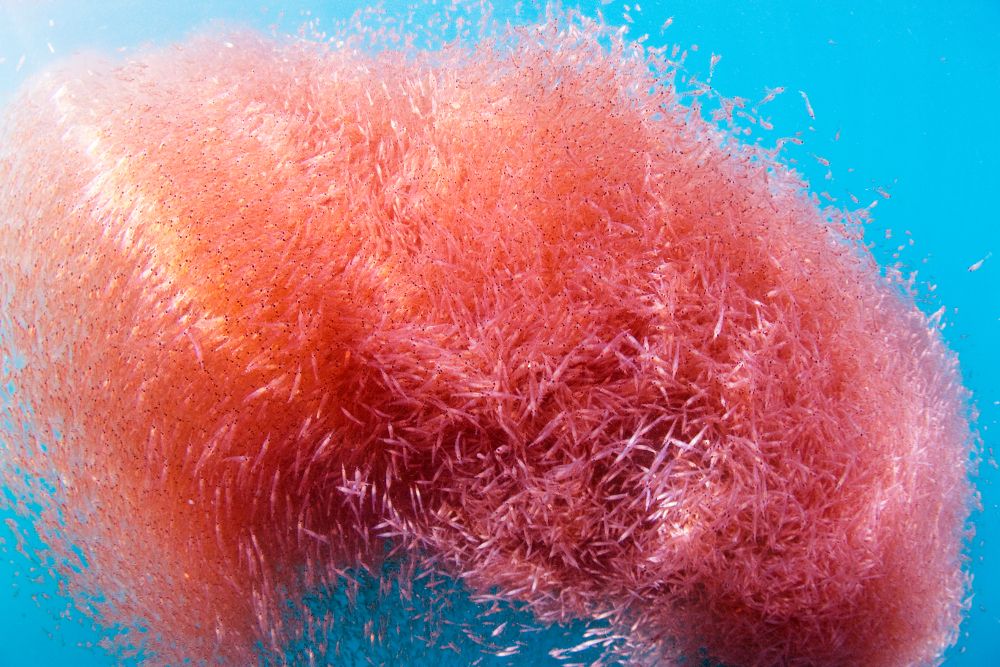
Photo from Aker BioMarine
Early on, Aker BioMarine invented a new way to catch krill with its patented fishing system, Eco-Harvesting. The technology platform brings krill live and fresh aboard its vessels while singling out unwanted bycatch and minimizing its environmental impact.
Technology also impacts how the company harvests and manufactures. “By using live data and machine learning, we can better optimize and manage harvesting patterns, production flow, and maintenance to increase efficiency, including the reduction of fuel consumption,” Haug Khoury says.
The company is also working with other krill fishing companies operating in the Antarctic to create penguin buffer zones. “Together we have agreed to voluntarily avoid fishing in areas around the Antarctic peninsula, including ‘buffer zones’ around the breeding colonies of penguins, in order to protect Antarctic wildlife.”

Photo © Howtogoto - Stock.adobe.com
Sidebar: Initiatives In Preservation And Regeneration
The FairWild Foundation
The FairWild Foundation provides a global framework for implementing a sustainable and fair-trading system for wild-collected plant ingredients and their products.
“Collection practices of wild botanicals impact entire ecosystems,” says Wilson Lau, vice president of sales and marketing for Chinese herb supplier Nuherbs (San Leandro, CA) and a FairWild Advisory Board member. “Sustainable harvesting of wild plants can provide an incentive to maintain the habitats for the benefits of other species.”
The FairWild Standard “protects plant species and local wildlife from the effects of over-harvesting and makes sure local collectors enjoy fair working conditions,” says the group’s website. The standard addresses four areas: sustainable harvesting, resource management, ethical working conditions, and traceability in trade.
In addition to FairWild, there are many certifications, foundations, programs, and initiatives that offer frameworks, guidelines, standards, research, and protection efforts to further the natural product industry’s sustainability efforts.
The Sustainable Herbs Program
The Sustainable Herbs Program, in partnership with the American Botanical Council (Austin, TX), helps protect herbs and supports sustainability in the industry through various mediums. The program offers resources and guides for companies in the herb industry with best practices, case studies, exercises, and more.
“We are continuing to produce educational content, primarily with videos about what a range of companies are doing to address these issues because our belief is that these stories are one of the best ways to inspire action,” says Ann Armbrecht, PhD, director of the Sustainable Herbs Program. “We are also collaborating with others to organize panel discussions, multi-stakeholder meetings, and other gatherings in order to mobilize conversations and actions on these issues in the industry as a whole.”
The Indian Kino Tree Initiative
“Pterocarpus marsupium is often described as one of the most multipurpose forest trees,” says Shaheen Majeed, president worldwide of ingredient supplier Sabinsa Corp. (East Windsor, NJ). Although the Indian Kino Tree is highly valued, it is also listed on the International Union for Conservation of Nature’s Red List of Threatened Species. “Continued depletion of this species without any replanting initiative endangers the tree’s population and continued availability over a period of time,” says Majeed. “We want to prevent such a possibility.”
The Sami-Sabinsa Group supports reforestation for cultivating Pterocarpus marsupium through its good agricultural practices program. The company says: “Under the initiative, the land in the Seoni and Balaghat regions in Madhya Pradesh, India, is provided by the forest department of the state of Madhya Pradesh, with the Madhya Pradesh Rajya Van Vikas Nigam performing the cultivation and maintaining the plants for a minimum period of five years. After five years, the trees are self-sustaining.”
The Panda Friendly Program
The Panda Friendly Program’s goal is to teach local farmer co-ops in China to harvest herbs in a way that reduces damage to the panda habitat area, allowing wildlife to safely reside in their natural habitats.
“The Southern schisandra berry harvest is usually quite destructive, as the whole vine is pulled down, killing the vine and often damaging the tree that supports it,” says Brien Quirk, director of R&D at Draco Natural Products (San Jose, CA). Optimal harvesting is also less than desirable, he adds. “Oftentimes, immature green berries are harvested in the summer, scalded in boiling water, then sundried, giving the appearance of autumn-harvested, mature, brownish-red berries.”
Draco is exercising its knowledge and reach to help promote better practices by participating in the Panda Friendly Program alongside other partners. Says Quirk: “[The] program developed a quality standard for wildcrafting, where only mature berries are taken, bunches are clipped from the vine without destroying the vine or the supporting tree, and the top one-third of the berries on the vine are left alone to ensure regeneration and sustainability. This helps protect the habitat from unnecessary destruction and teaches the locals to place value on the integrity of the ecosystem for future harvests.”
Draco Natural Products joined the program 11 years ago. Additional plants, herbs, and roots are being considered for the Panda Friendly Program, including Traditional Chinese Medicinal (TCM) plants, turmeric, and ginger. And efforts are already underway to add more villages and households of wildcrafters to the co-op.
The Antarctic Wildlife Research Fund
To protect the Antarctic ecosystem through research and education, the Antarctic Wildlife Research Fund (AWR) was established, in partnership with krill ingredients supplier Aker BioMarine (Oslo, Norway) and other organizations, to facilitate and promote research on the Antarctic ecosystem through support from commercial partners and individuals.
“In order to help safeguard the future of the Antarctic fishery, we need to continue filling the knowledge gaps around the krill biomass and its surrounding ecosystem,” says Runa Haug Khoury, director of sustainability, Aker BioMarine AS. “With the work of AWR, ongoing science and data will become available, helping the industry make educated decisions on how to better understand krill and the interlinkages between species in the Antarctic ecosystem, and how to best care for and protect the ecosystem. As we continue to face potential challenges, such as those imposed by global warming, AWR will look at how the rise of ocean temperatures will affect krill’s behavior, movements, and reproduction.”
References:
- Stuchtey M and Rossé M. “Cultivating a regenerative food system.” GreenBiz. Published January 28, 2017. Accessed at: https://www.greenbiz.com/article/cultivating-regenerative-food-system
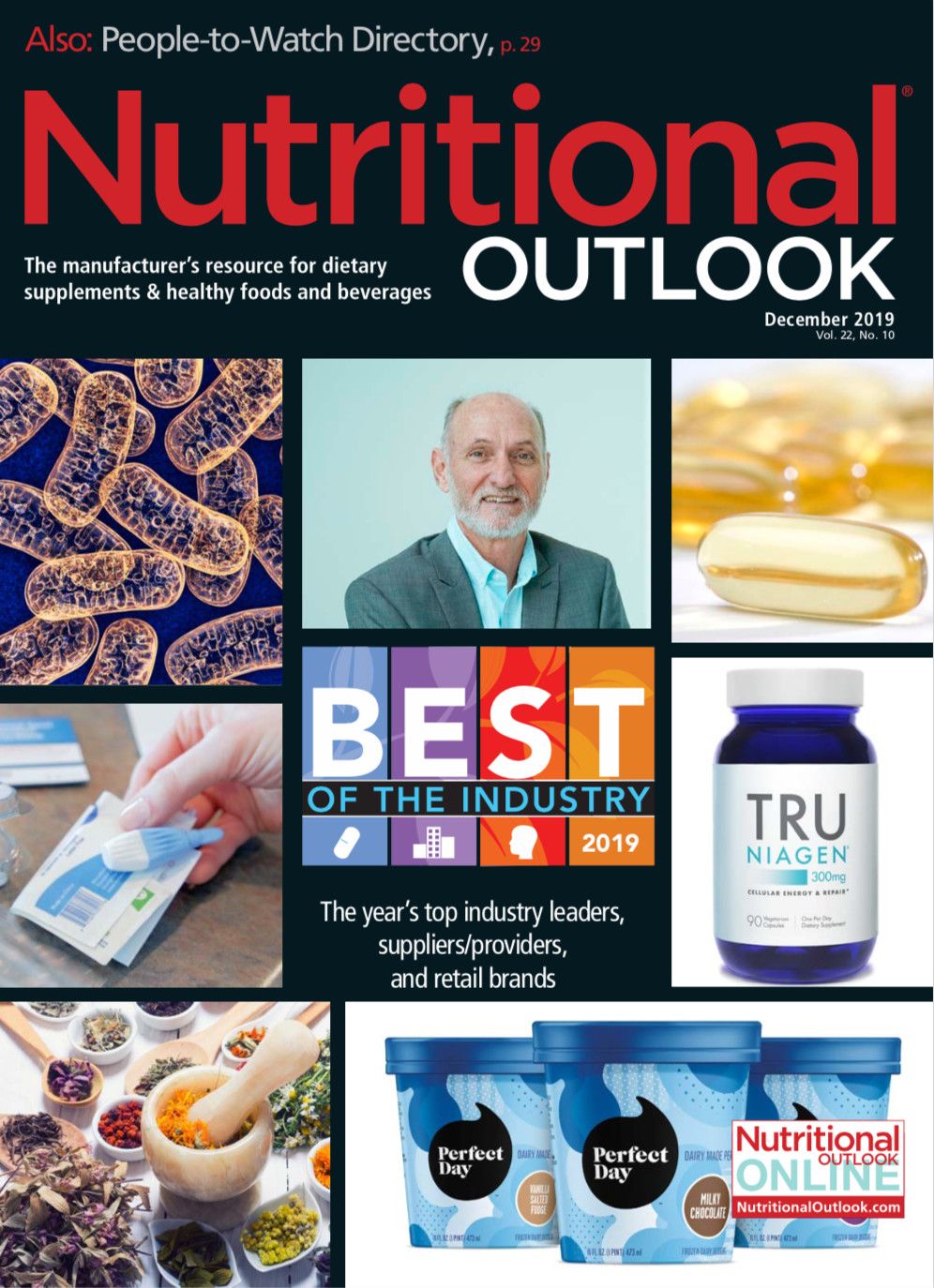
Prinova acquires Aplinova to further increase its footprint in Latin America
April 7th 2025Prinova has recently announced the acquisition of Brazilian ingredients distributor Aplinova, which is a provider of specialty ingredients for a range of market segments that include food, beverage, supplements, and personal care.


